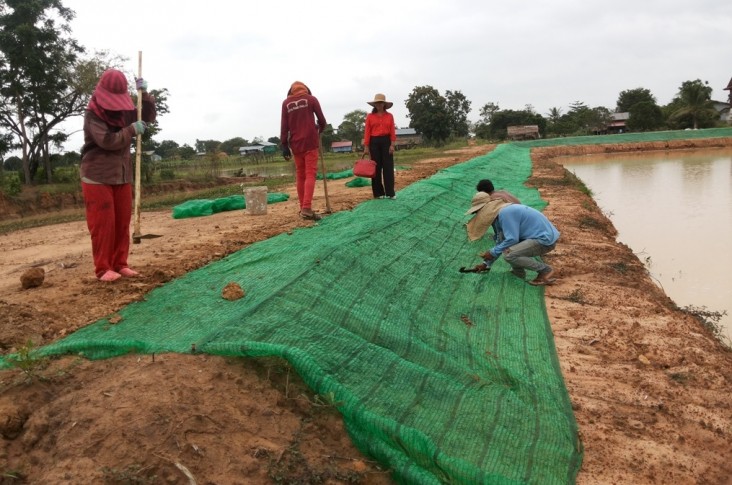
Feb. 2015—Nuon Pichnimith spends all day, every day thinking about water. It is his job to make sure that rural communities in Cambodia have access to safe water.
This is a massive responsibility since millions of Cambodians struggle each day to gather this necessary ingredient for life, one that typically only requires a simple trip to the tap in most developed countries.
The vast majority of rural communities in Cambodia are entirely dependent on community water supply ponds for drinking water during the dry season because groundwater is either not available or is too deep to reach easily. If there is a prolonged dry season, access to safe drinking water becomes a serious issue. And with the recent changing of climatic patterns, the likelihood and severity of extended dry periods is increasing.
“It’s hard to know exactly what climate change will do to our water,” said Pichnimith, who is the deputy director of rural water supply for Cambodia’s Ministry of Rural Development.
Cambodia’s water supply is particularly vulnerable to climate change as temperatures are expected to increase while wind- and rainstorms are expected to intensify.
Flooding during the rainy season appears to be getting more severe already, damaging local water supply and sanitation facilities. The projected increases in wet season rainfall are expected to escalate dike erosion in community water supply ponds, decreasing both water quantity and quality as a result of increased soil contamination.
Given these challenges, Pichnimith has started thinking about how to ensure that rural water infrastructure can withstand anything that climate change throws its way. That’s why construction of community ponds, which Pichnimith and his team oversee, now factor in climate resilience.
With support from the USAID Adapt Asia-Pacific project, the ministry evaluated ponds in the Tonle Sap region of Cambodia in 2013 and developed designs for climate-proofing the ponds as part of an Asian Development Bank-funded project.
“The assessment and recommendations developed by USAID helped us to understand how climate change will impact the ponds and, specifically, what we can do about it,” said Pichnimith.
The latest round of pond construction included climate change adaptive features, which USAID recommended. To protect the dikes from erosion and maintain both water quality and quantity, the ministry installed geotextile liners in 2014 that stabilize the exposed edges of the ponds. During the summer rainy season, the ponds suffered less from erosion and maintained cleaner water.
The project’s design recommendations were developed into guidelines for ministry officials to use in climate-proofing the ponds. The designs improve the ministry’s chances of securing future funds for dealing with the effects of climate change on rural water supply. Ministry officials are already drafting another project with the Asian Development Bank where the new designs will be incorporated into pond construction.
“Using the designs, we can build stronger rural ponds that will last longer and provide better quality water to the people,” said Pichnimith. And that’s the future he enjoys pondering.
The five-year USAID Adapt Asia-Pacific project, which began in 2011, is designed to help countries in Asia and the Pacific obtain financing to address climate change.
LINKS
Follow @USAIDAsia, on Facebook, on Flickr, on YouTube







Comment
Make a general inquiry or suggest an improvement.